Urban Glass House, 330 Spring Street: Review and Ratings
between Greenwich Street & Washington Street View Full Building Profile
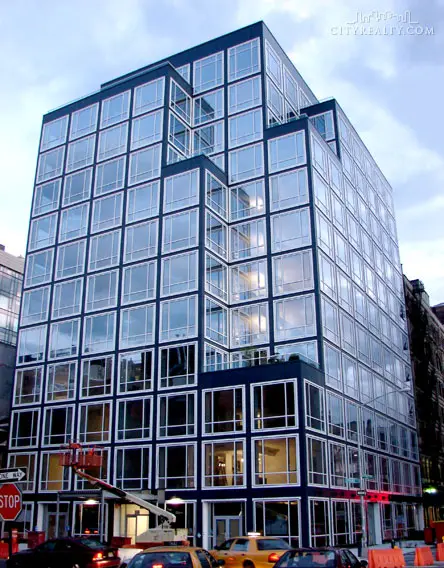

"The Urban Glass House" at 330 Spring Street in SoHo is a very handsome, mid-rise, residential condominium building that was designed by Philip Johnson, who died in 2005 at the age of 98, and Alan Ritchie.
The 12-story building has 39 apartments and a penthouse unit and was developed by Glass House Development LLC, a partnership of Abram Shnay, Charles Blaichman and Scott Sabbagh.
The building is at Washington Street and is very close to West and Canal Streets and was completed in 2006.
Bottom Line
A simple modern and clean-cut apartment building with 40 units that is close to SoHo and TriBeCa and the Hudson River.
Description
The building's façades have a high fenestration factor and its large square windows have five panes. The building is almost a cube with five small setback cutouts on 4th, 9th, 10th and 12th floors.
The clean lines of the building's design follow the tenets of the International Style of Modernism that was epitomized in Mr. Johnson's one-story, all-glass-façade house in New Canaan.
In a statement about the project's design, Alan Ritchie, Mr. Johnson's final partner and his collaborator on the project, noted that "While earlier iterations of the design for this new building flirted with some very adventurous geometries, the discipline and modernist principles of the New Canaan house ultimately ruled the day. Those principles were consciously applied to the final design for the Urban Glass House, and the outcome is a calm, ordered residential building that will provide a wonderful sense of refuge, a haven of quiet elegance and privacy within New York City."
Amenities
The building has an attended lobby and a concierge, a fitness center, storage bins, a bicycle room, and a superintendent, but no balconies, no sidewalk landscaping, no roof deck and no garage.
Apartments
The penthouse unit has 12-foot-high ceilings and a double-sided fireplace.
The other apartments have 9-foot-9-inch-high ceilings and many have large open plan living/entertaining spaces, some of which measure 42 feet 6 inches by 12 feet 11 inches and some that measure 35 feet 8 inches by 19 feet 3 inches.
In this project, Ms. Selldorf used a palette of black, gray and silver and matte and reflective surfaces in the interiors. "The honed black granite surfaces, stainless steel counter tops on the kitchen island, and the anthracite color of the cabinetry add up to an expression of utilitarian elegance," according to the project's website, which added that "dark gray limestone...sets a tone of minimalist purity" in the bathrooms.
Ms. Selldorf designed a chevron-pattern for the apartment floors in white oak to evoke the brick flooring in The Glass House in New Canaan. A November 15, 2005 Business Week article by Reena Jana quoted Mr. Ritchie as noting that a decision was made to divide up large expanses of glass, that were so notable in the New Canaan house, for smaller, operable ones.
"The Urban Glass House updates the purity of the International Style for a new century," the building's website proclaimed, adding that "Floorplans have been designed to maximize space, heighten vistas, and celebrate openness. Yet through the skillful placement of sliding pocket doors, spaces can be made as intimate as desired."
The building also has remote-controlled motorized window shades. The Urban Glass House also has Bulthaup stainless steel kitchens with compressed black linoleum to reference the ubiquity of linoleum in modernist interiors, according to an article in the December, 2005 edition of AIA Architect.
Apartment 10B us a two-bedroom unit with a foyer than leads to a 28-foot-long living/dining room with an open kitchen and a terrace.
Apartment 7C is a two-bedroom unit that has a foyer that leads to a 42-foot-long living/dining room with an pass-through kitchen.
Apartment 3A is a three-bedroom unit with a 13-foot-long foyer next to a 60-foot-long office that leads to a 24-foot-long living/dining room with an open kitchen with an island and a 22-foot-long terrace.
Apartment 2A is a one-bedroom unit with a 36-foot-long living/dining area with an open kitchen with an island and a 14-foot-log library/media room and a 7-foot-square home office.
History
Glass House Development LLC acquired the site and the architectural plans from Greenwich Street Partners LLC for about $24 million.
The project had been initiated by Antonio Nino Vendome and at one time Mr. Johnson had designed a 26-story, asymmetrical, torqued and flaring tower of many angles, colors and façade treatments that was similar to designs subsequently developed by Frank O. Gehry for a major project, Atlantic Yards, for Forest City Ratner in Brooklyn.
The prior, flamboyant design, which was known as "the habitable sculpture," met with opposition from some community groups for being out of context with the neighborhood even though its cantilevered and complex form would have been one of the most interesting designs in the city.
Annabelle Selldorf, who has designed interiors for the Neue Gallerie on Fifth Avenue at 86th Street and the Museum for Biblical Art on Broadway at 62nd Street and for many prominent contemporary artists such as Jeff Koons, Eric Fischl and David Salle, designed the new building's lobby and interiors.
The sleek and elegantly-styled building takes its name from the famous 1949, one-story, glass-enclosed home in New Canaan, Connecticut, of Philip Johnson, who was the dean of American architecture in the late 20th Century. This building was Mr. Johnson's last project.
Mr. Johnson was also famous for his A.T.&T. building on Madison Avenue at 56th Street (now the Sony Building), Pennzoil Plaza and the RepublicBank Building and the Galleria in Houston and many other important skyscrapers across the country as well as, in New York, the garden at the Museum of Modern Art, the elliptically-planned building at 885 Third Avenue, often referred to as the "Lipstick" building, the very handsome Takashimaya Building on Fifth Avenue between 54th and 55th Streets and the Museum of Broadcasting on West 52nd Street.
The 4-bedroom, 4-bath penthouse has a total of 4,266 square feet of interior space and 1,579 square feet of exterior space, 12-foot ceilings and a living/entertainment space that measures about 57 by 21 feet. A one-bedroom apartment on the third floor will have an open plan living/entertainment space that measures 35 feet 8 inches by 18 feet 5 inches.
Initial prices of most of the units ranged from about $1,650,000 to $3,200,000.
The building's website noted that "modernism has never stood in opposition to luxury," adding that "In fact, many of the most revered buildings of the 20th Century were conceived and built for wealthy clients who sought a new ideal." "These homes," it continued, "were expressly created to address new modes of living, and with a recognition that the greatest luxury consists of perfect proportions, carefully chosen materials, attention to every detail, and the most exquisite craftsmanship."
Location
The building is just to the west of the James Brown House that was erected in 1817 and was designated an official New York City landmark in 1969. A few years later, it was acquired by a group led by Rip Hayman who rented a room in the building in 1973 above the bar and would later restore the bar and run a publishing concern upstairs. According to an November 6, 2006 article in the New York Sun by David Lombino, "to avoid the red tape associated with installing a new sign on a landmarked building, Mr. Hayman and his friends painted part of the neon 'Bar' sign to make it read 'Ear.'"
Mr. Lombino quoted Mr. Hayman as recalling that the area was "a wilderness" and "a dying tale of the marine industry in Manhattan" that has since become "a big tide of concrete and Pradas" and "lots of poodles and house plants."
While the Urban Glass House was initially a lone pioneer, several other luxury residential projects soon followed with other new buildings at 302 and 304 Spring Street among others, and in early 2007 the city approved plans for the 45-story Trump SoHo Hotel about three blocks away from the Urban Glass House.
The Urban Glass House is east of a ventilation building for the Holland Tunnel and across the street from a large parking lot that the Department of Sanitation was considering as the site for a major garage, a plan opposed by some community groups and local politicians given the emerging high-end residential character of the surrounding neighborhoods. The proposed garage would be about 150 feet high, or about 13 feet higher than The Urban Glass House.
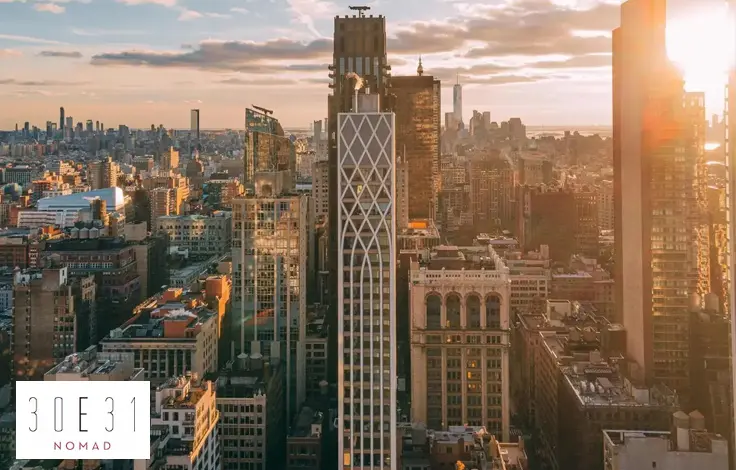
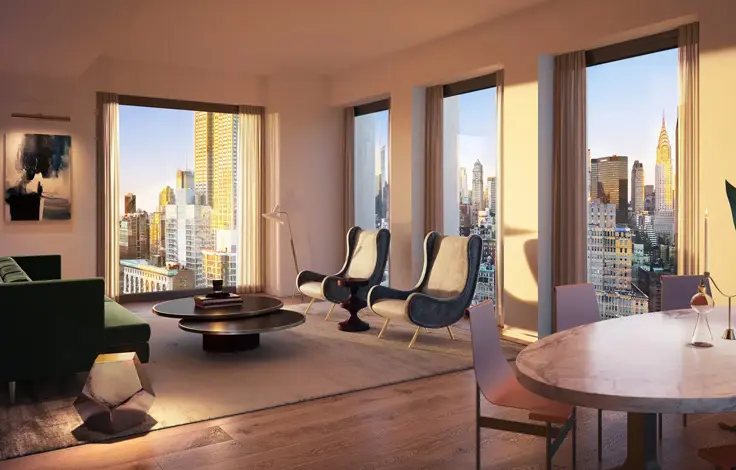

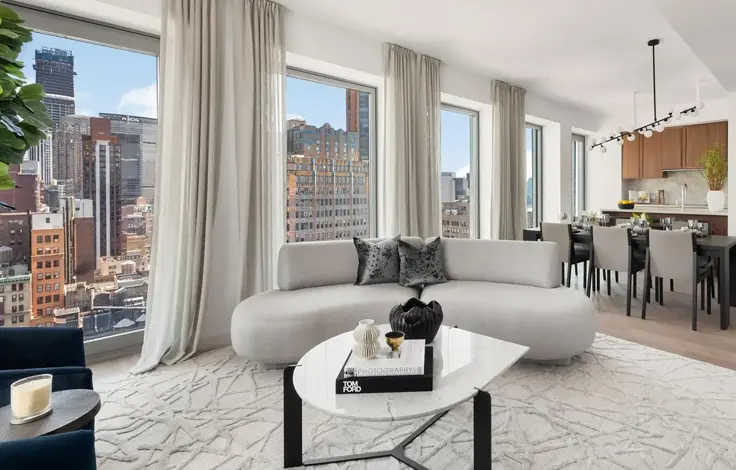
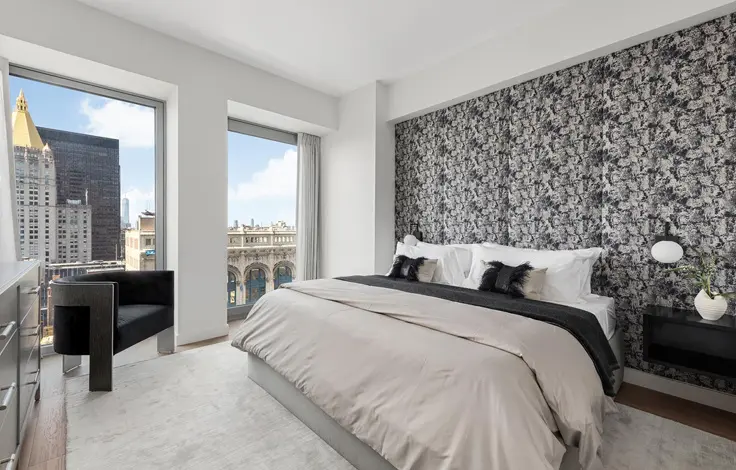
 6sqft delivers the latest on real estate, architecture, and design, straight from New York City.
6sqft delivers the latest on real estate, architecture, and design, straight from New York City.
